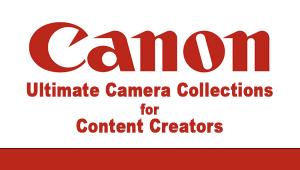Pro's Choice: The Photography Of Jonathan Robert Willis: Simply Elegant Portraiture
Client: Cincinnati Magazine

ALl Photos © Jonathan Robert Willis
A Change In Viewpoint And Attitude
When he shot film, Willis was working first with a twin-lens Rolleiflex 2.8, then added a Hasselblad 501CM when business picked up. Kodak Tri-X was his favorite emulsion. The switch to digital came in 2004, in part because clients were starting to request it. What’s more, “it dawned on me that I was standing too much in the shadow of my mentor and felt I needed to make a departure, to reinvent myself and develop my voice creatively. So the digital camera seemed to be a perfect tool for me to rethink my approach to image making.”
Client: Good Samaritan Hospital, Cincinnati

Unfortunately, the D-SLR proved at first to be a hindrance. “I went from taking a more intimate approach to the subject, engaging in conversation, with good eye contact, to hiding my face behind the camera.” But time heals all misguided shooting methodologies, the result being that now Willis’s portraits reflect a seeming bond between subject and photographer, resulting in more meaningful and engaging portraits.
While he started shooting digital with a Canon EOS 20D, Willis’s camera of choice today is the Canon 5D Mark II. His backup is the original 5D. He will occasionally rent a Hasselblad.
Client: Simple Portrait Project Family Portraits

“I have five lenses in my camera bag that I use consistently,” Willis points out. “The one that gets the most use by far is the Canon 85mm f/1.2.” After that comes the 50mm f/1.2, followed closely by the 16-35mm f/2.8. “I didn’t buy a fancier camera body because I was more interested in investing in lenses and lighting.”
Much of Willis’s shooting involves the camera seated atop a Manfrotto tripod/head combo, but he may opt for a camera stand in the studio. Either frees his concentration so he can focus on establishing rapport with the subject.
Personal

Willis adds: “I normally shoot to a memory card, which lets me work really, really fast. If it’s for a major advertising campaign, we shoot tethered, regardless of location, so the art director has more immediate access to the image on screen for critical review.”
Willis has always leaned toward monolights, for starters, because that’s what he learned to use in college. But he also likes monolights because “they are so easy to set up, and they supply all the power that I need.” When first setting out on his own, he opted for White Lightning monolights, because they were cost-effective. Today, Willis lights with Profotos—four 600 ws and two 300 ws units. He also owns a battery-driven power pack, the Elinchrom Ranger RX Speed AS, plus two heads, which see occasional use on location. “When I use them it’s typically with a small softbox or a 90-degree reflector over which I wrap a translucent piece of cloth to soften the light spread.” Even on location, his go-to lights are the Profotos, but he may combine them with the Ranger when needed. When employing the Profotos on an outdoor location shoot, he’ll either run an extension cord or rent a portable generator. How many heads go on location? “That depends on the need or budget, and sometimes the crew. I always carry at least two heads. If it’s for a cover shot, then I’ll bring four heads to cover all contingencies.”
Client: FanMail Marketing

Over the years, Willis has expressed a marked preference for three light-shaping tools, beginning with Profoto’s own beauty dish with grid. “I would use that, for instance, to soften and light somebody’s face, letting everything else fall off around the shoulders.” He also employs a variety of Chimera softboxes, adding spot grids on occasion, and he gets “a fair amount of use out of Creative Light circular collapsible reflectors and white fill cards.”
Willis continues: “I’ve been using umbrella lighting a lot more in recent months, notably the Westcott 43-inch soft silver umbrella. I would use the umbrella when I’m shooting a portrait in a smaller room and need to focus the light. I love the way this light shaper hits the skin and the texture it imparts.” By “focusing the light” Willis means sliding the umbrella along the shaft closer or farther away from the head, which affects the light spread. But he adds: “To be honest, I feel my way through the shoot sometimes. I don’t have a science about lighting. But I’ll get a sense from working with somebody what quality of light I want hitting the skin. And that will point me to use a softbox or umbrella.”
Client: Pause Magazine

As is true of most working photographers, Willis is constantly trying to reinvent himself. “I do a considerable amount of personal exploration work to stay fresh. If you are only making images because someone is paying you to do so, you may find yourself on the road to disappointment. Plus from a marketing standpoint, I only show work that I want to shoot. It’s a longer road, but in this day and age it’s the only road for the long haul. I can shoot other types of images but everything on my website reflects work that I am passionate about. It doesn’t get me every job, but once I am considered for a project I feel I have greater influence over the final execution—because I am hired for my style, a style that I have honed and explored to great depth. I am working toward becoming a master portrait artist.”
To see more of Jonathan Robert Willis’s work, please visit his website at: www.jonbob.com.

















































